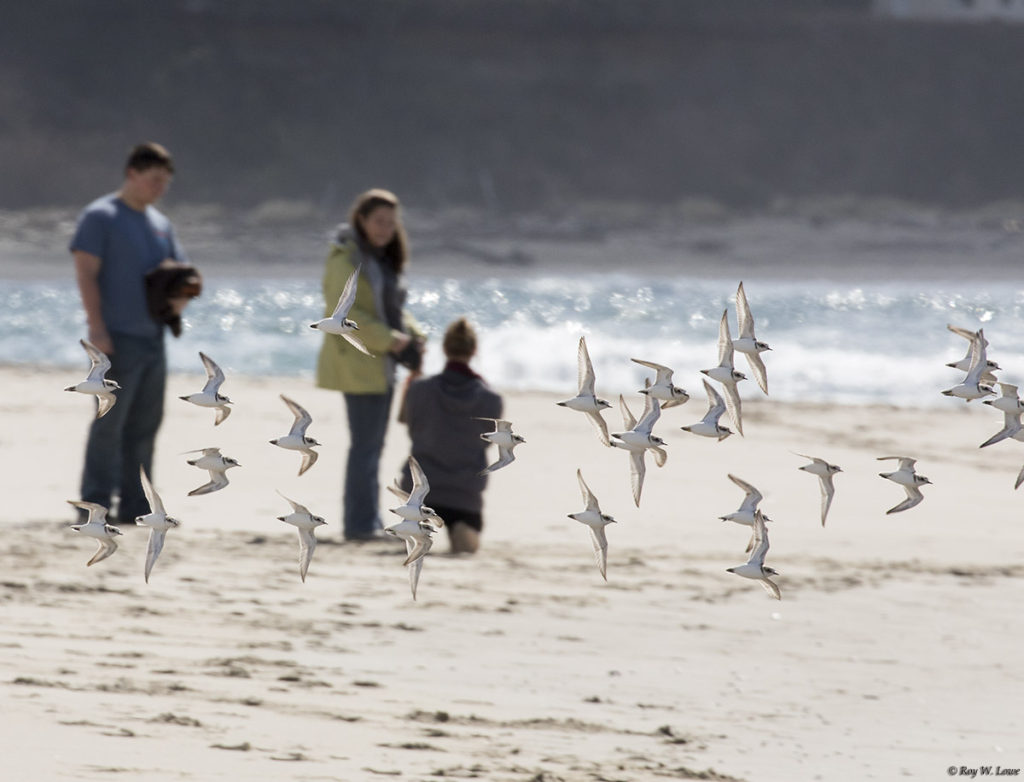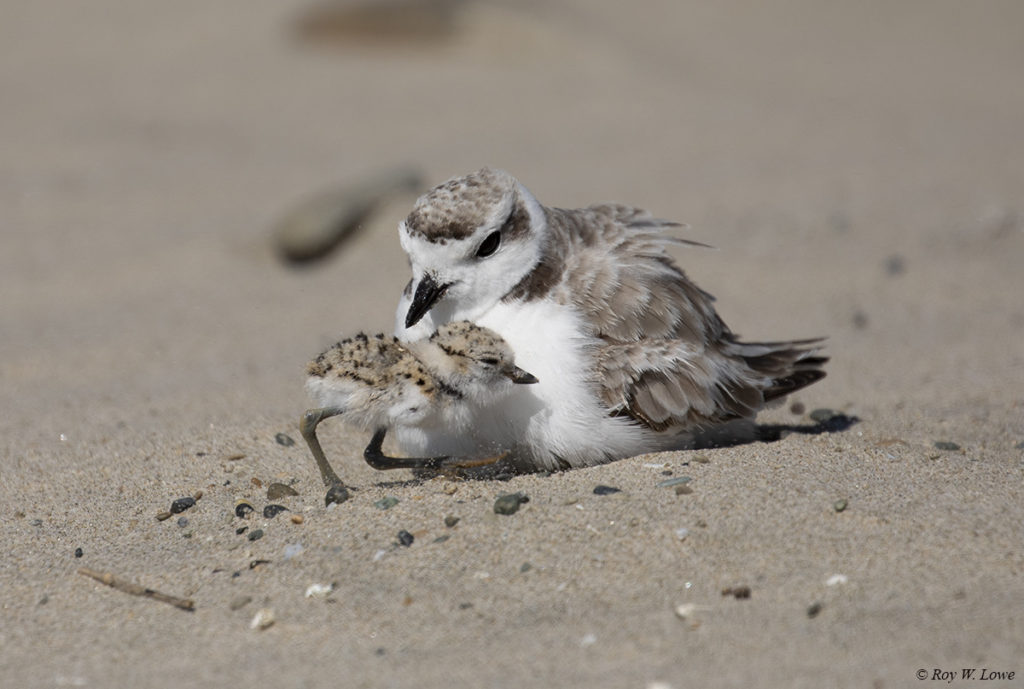
By DANA TIMS/YachatsNews.com
WALDPORT — The nesting season for snowy plovers in Lincoln County is just about over, with the long-endangered birds just now transitioning to their wintering period.
As many as 33 snowy plovers were tallied in one flock at Bayshore recently, including several birds with colorful, distinctive leg-band tags indicating they are from out of state.

The relatively high count is evidence that plovers (pronounced PLO-vers) have left the nests they started building in spring and are now ready to face the rigors and predators on the wide-open sand of the winter together.
Coastal biologists know all of this, in large part, because Roy Lowe and his own band of plover-watching volunteers routinely spend hours on Lincoln County beaches counting nests during the spring and, now, logging miles upon miles on the beach monitoring their collective health over the coming winter months.
Much more is generally known about snowy plover populations on the coastal portions of counties to the south – Lane, Douglas and Coos, said Cheryl Strong, a U.S. Fish and Wildlife Service wildlife biologist in Newport.
That’s because those three counties have the wide, long stretches of open beach that attract enough plovers to warrant year-round scientific monitoring. Specific management plans are in place there to try to ensure that a total statewide plover population that fell to only about 50 individuals in the early 1990s are protected going forward through specific rules and regulations.
And while it’s still a violation of the federal Endangered Species Act to harass or harm plovers in Lincoln County, she said, the county’s beaches don’t provide enough cumulative nesting habitat to merit establishment of snow plover-specific management areas here.

Lincoln County volunteers
All of which makes the work of Lowe — himself a retired U.S. Fish and Wildlife Service administrator – and other volunteers critical in understanding how the plovers are faring in Lincoln County.
“Without Roy and others walking the beaches,” Strong added, “we wouldn’t know how many nests we have in Lincoln County.”
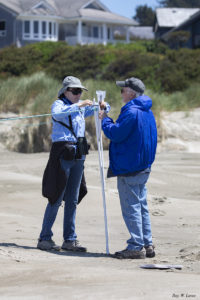
This year, for instance? There were 48, all of them tallied by Lowe and other volunteers such as Jon French and Nancy and Mike Thomas of Bayshore; Toledo resident Megan Hoff in the Newport area; Cathy Tronquet around South Beach; and Cheryl Horton, another Newport resident who “long ago,” Lowe said, worked as an intern in his office before getting a master’s degree in wildlife studies from Oregon State University.
In spring, the volunteers report each new nest siting to state park rangers, who then rope off the nesting areas and post signs telling beachcombers to keep their distance. Nest disturbance, the signs say, is all it may take to prompt plovers to abandon both their nests and the two to three inch-across eggs they generally lay there.
Lowe’s own interest in plovers was piqued not long after he retired in January 2015, when he heard that someone reported seeing snowy plovers in early May of that year, a timeframe associated with nesting.
“We saw them out flocking on the beaches in winter around 2013, but I found it very suspicious they’d be spotted during a time of year they should have been breeding,” said Lowe, 68, who was the U.S. Fish and Wildlife Service’s first employee on the Oregon coast when he was first transferred here more than 30 years ago. “So in 2015, I went out looking for a nest.”
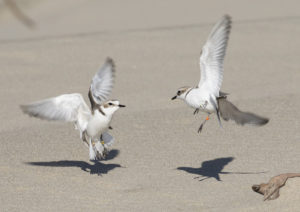
He found not one nest, but two, marking the first nests to be located in Lincoln County in more than four decades.
“People from all over the state came to see them,” Lowe said. “Little did I know, they were already nesting here.”
Even on the best days, he said, life is tough for birds about the size of a tennis ball. Their only defense against predators such as coyotes, skunks, crows and seagulls is their sand-colored plumage.
After the nesting season, they no longer are in pairs but in flocks. To avoid predators they will find any small depression, even one as small as a human footprint, in an attempt to get down out of sight.
Lowe also implores people not to feed crows, ravens and gulls because “It just increases their populations and adds problems for plovers.”
These days, Lowe, an accomplished amateur wildlife photographer, travels widely in pursuit of his art. His Instagram account, for instance, is full of colorful images of orcas, grizzlies, bald eagles and sea otters.
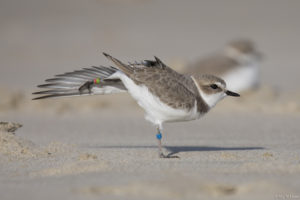
Still, there is something about snowy plovers that leads him back to the beaches whenever he can.
Once, not long ago, he spied a plover on a nearby dune and he hit the ground, belly-first, camera in hand. Peering through his telephoto lens, he spied the bird, which he quickly noticed was staring right back.
“All of a sudden, it charges me like crazy,” said Lowe, who remained frozen in place. “I kept thinking, it’ll stop, it’ll stop. But it just kept right on coming.”
When the plover finally did halt, about five feet short of his position, Lowe realized the frantic charge had been about gobbling down some tiny bug it had seen. The plover, its meal safely in its mouth, trod off nonchalantly to the next dining opportunity.
“It was a fantastic experience,” Lowe said. “One definitely worth crawling around in the sand for.”
- Dana Tims is an Oregon freelance writer who contributes regularly to YachatsNews.com. He can be reached at DanaTims24@gmail.com
